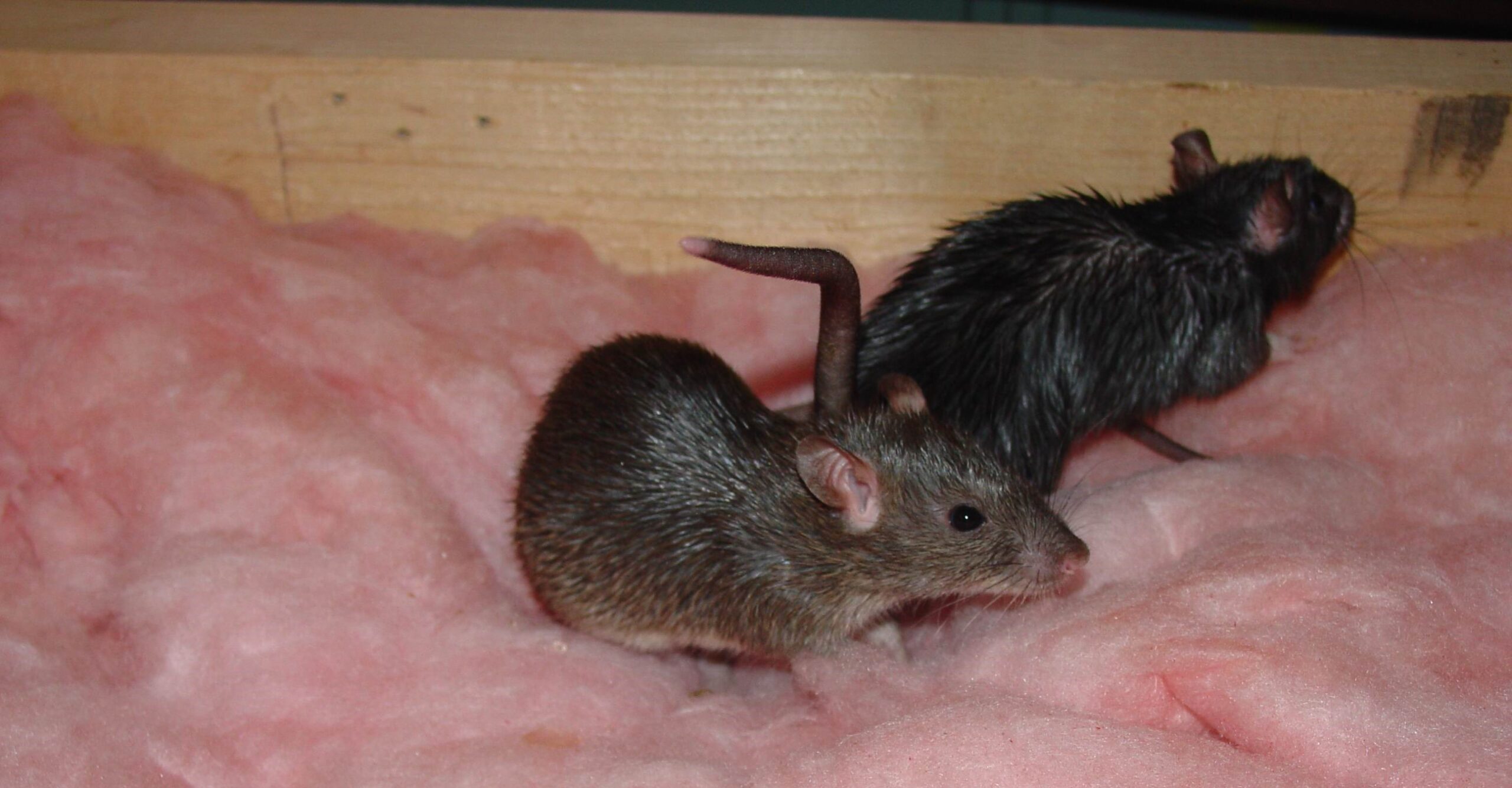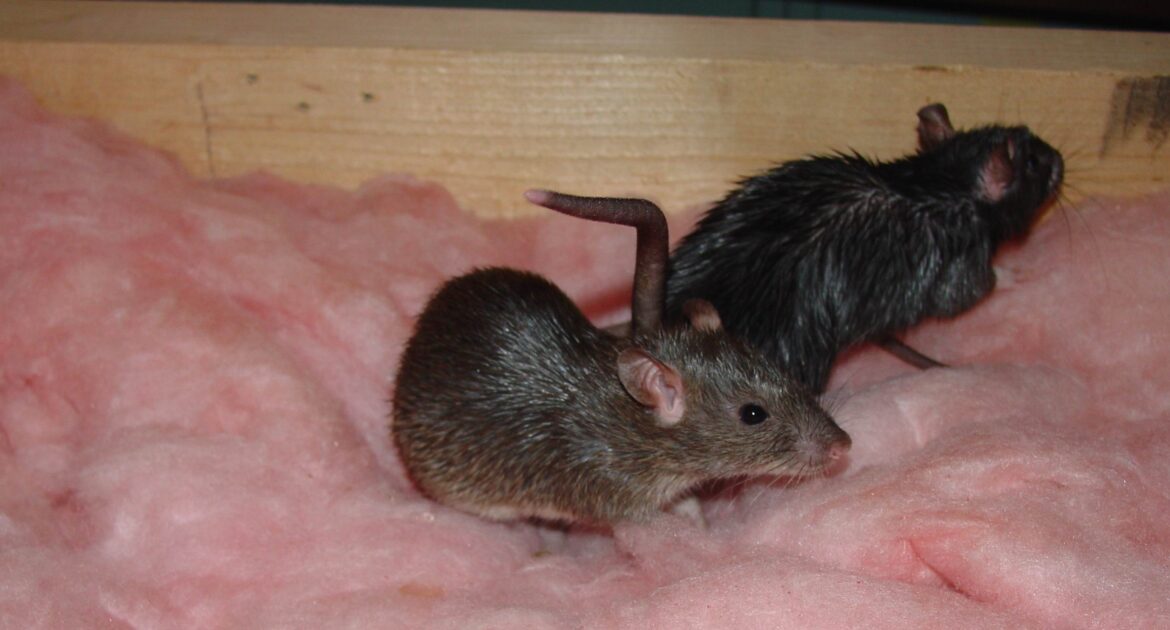Discovering the signs of rats in your home is something no homeowner wants to experience. Unfortunately, rat infestations can occur more easily than you might think, especially when preventive measures aren’t in place. Whether it is structural vulnerability, access to food and water or shelter that has brought rats into your home, our team at Skedaddle Wildlife Control in Pitt Meadows are the experts you can count on.
To better understand how infestations happen and what you can do to prevent rats in your home, this article highlights common causes, the associated risks, and effective strategies to protect your property. Whether you’re located in Pitt Meadows or a surrounding area, Skedaddle is here to help with expert advice and services.
Causes of Rat Infestations
There are multiple factors that can lead to an infestation. By understanding these causes, you can take proactive steps to make your home less inviting to rats.
1. Access to Food and Water
Rats are opportunistic feeders and will seize any opportunity to access food and water in your home, including:
- Unsecured Trash: Garbage bins that aren’t tightly sealed can become a buffet for rats.
- Pet Food: Open containers of dog or cat food left out can be an easy target.
- Kitchen Leftovers: Crumbs, spills, and poorly sealed food items in cupboards can attract them.
- Leaking Faucets or Pipes: Standing water in sinks, basements, or outdoor areas serves as a hydration source for rats.
2. Clutter and Shelter
Rats seek out safe, quiet spaces for shelter where they can hide and nest. Common areas include:
- Cluttered Basements or Garages: Piles of cardboard, old newspapers, or unused items provide perfect nesting materials.
- Attics and Crawlspaces: These areas offer easy access and provide shelter away from human activity.
- Outdoor Debris: Overgrown shrubs, untrimmed grass, and piles of wood can become inviting hiding spots.
3. Structural Vulnerabilities
The structure of your home might unknowingly offer an open invitation to rats. They only need a hole the size of a quarter to gain access. Key vulnerabilities include:
- Cracks and Holes in Foundations: These small openings can serve as entry points.
- Unsealed Vents or Gaps Around Pipes: Rats can easily squeeze through these gaps.
- Chimneys and Rooflines: Rats are excellent climbers and can enter through poorly sealed roof vents or chimneys.
By addressing these causes with proper home maintenance, you can lower the chances of encountering an infestation.
Risks of Rat Infestations
Rat infestations pose serious risks to the health and safety of your home and family. Here’s how they can impact you:
1. Health Hazards
Rats are carriers of multiple diseases that can be transmitted to humans and pets. Some of the most concerning risks include:
- Hantavirus: Spread through their droppings, urine, or saliva, this virus can cause severe respiratory issues when inhaled.
- Leptospirosis: Rats leave urine in areas they frequent, and contact with contaminated surfaces can cause flu-like symptoms or even kidney damage.
- Salmonella: Consuming food or water contaminated by rats can lead to gastrointestinal problems.
2. Property Damage
The damage caused by rats extends beyond contamination. Common issues include:
- Damaged Insulation: Rats use insulation as nesting material, reducing its effectiveness and increasing utility costs.
- Chewed Wires: This creates a significant fire hazard, as exposed wiring can lead to electrical issues.
- Destroyed Materials: Wood, drywall, and furniture can all be ruined by gnawing.
3. Rapid Reproduction
Rats reproduce quickly, which means even if you only notice one or two rats, there could already be a larger hidden population. A single pair of rats can produce hundreds of offspring within a year under optimal conditions.
This combination of health risks, property damage, and rapid population growth requires prompt action.
Prevent Rats in Your Home
Preventing rats from invading your home begins with proactive measures aimed at closing off their access and eliminating their resources. A key first step is to secure all food sources. Storing pantry items in airtight containers made of glass or hard plastic creates a solid barrier against rodents. Additionally, keeping your kitchen and dining areas spotless is essential. Clean up any spills or crumbs as soon as they happen, and avoid leaving pet food out overnight, as it can attract unwanted pests.
It’s also crucial to seal all potential entry points around your home. Conduct regular inspections to identify cracks, gaps, or holes in your foundation, walls, or around doors and windows. Repair these vulnerabilities promptly to block possible pathways for rats. Installing mesh covers over vents and chimneys can further fortify your home, and weather stripping around doors and windows helps seal any small gaps.
Maintaining a clean and organized home is another effective deterrent. Rats are less likely to settle in spaces that lack suitable hiding spots or nesting materials. Regularly declutter areas such as basements, attics, and garages, and ensure outdoor vegetation, like bushes and trees, is trimmed to eliminate possible shelter. Firewood should be stored well away from the house, ideally at least 20 feet, to prevent it from becoming a convenient nesting site.
Proper waste management is an often-overlooked but essential step. Using sealed, rodent-proof bins for garbage and compost ensures that rats cannot access your waste. It’s equally important to avoid letting trash accumulate, particularly in outdoor spaces, and to monitor for any signs of tampering.
By combining these strategies—sealing your home, keeping it clean, and removing easy access to food and shelter—you create an environment that is far less appealing to rats. Taking these preventive measures not only protects your property but also saves you the trouble of dealing with an infestation.
When to Call Skedaddle for Rat Removal Services
Recognizing the right time to call Skedaddle for rat removal services is crucial to protecting your home and health. If you notice signs of a potential infestation, such as droppings, gnaw marks, scratched surfaces, or unusual noises within walls and ceilings, it’s time to act. Rats are nocturnal creatures, so hearing activity at night is often a major indicator of their presence. Additionally, foul odours caused by rat urine or nests can signal a problem that needs immediate attention.
- Call Skedaddle if you notice damage to food packaging, chewed electrical wiring, or chewed insulation.
- Rats can create serious safety hazards by chewing through materials.
- Homeowners with recurring infestations or unclear entry points should rely on professional services.
- Without proper intervention, rats can rapidly multiply, compromise your home’s structural integrity, and expose your family to health risks.
Skedaddle provides comprehensive, humane, and efficient rat removal services tailored to your needs. With expert techniques to safely remove rodents and prevent their return, Skedaddle can help you reclaim your space and ensure long-term protection. Don’t wait—contact Skedaddle at the first sign of a rat problem to maintain the safety of your property.
Taking Control in Pitt Meadows and Beyond
Homeowners in Pitt Meadows are no strangers to the challenges of maintaining properties in an environment surrounded by parks, like Pitt Lake, and natural greenery. This scenic location, while beautiful, also makes homes prone to rat activity due to abundant vegetation and water sources.
At Skedaddle, we specialize in humane strategies to protect homes in the area. Whether you’re noticing the early stages of a problem or looking to reinforce your home to prevent rats, we’ve got you covered.
Contact Us to Take the Next Step
If you suspect rats are already present or you want to stay proactive by reinforcing your home, Skedaddle can help. Taking action early can save you from health risks, property damage, and frustration. Call us today to schedule an inspection and protect your home for the long term.




